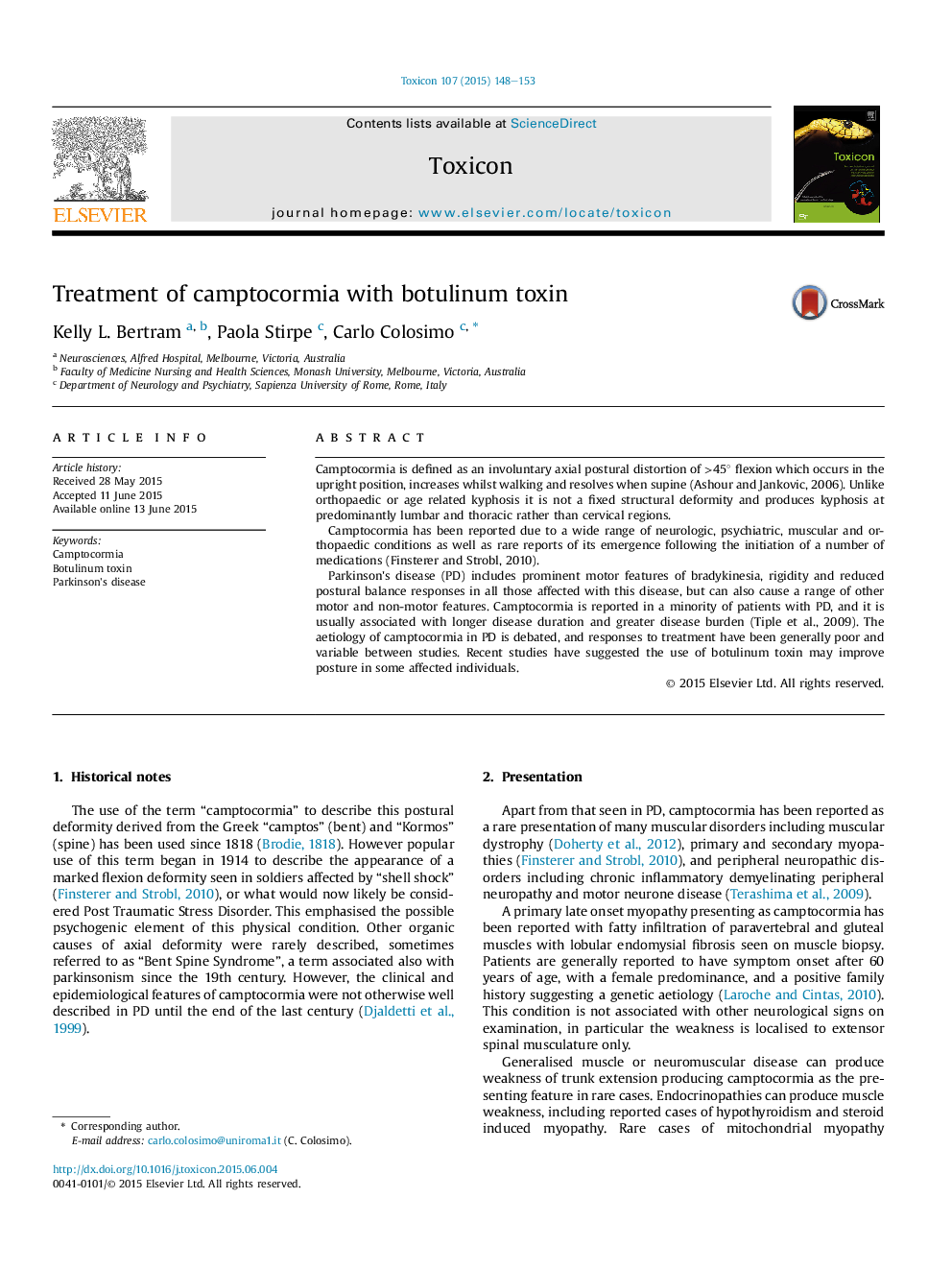| Article ID | Journal | Published Year | Pages | File Type |
|---|---|---|---|---|
| 2064353 | Toxicon | 2015 | 6 Pages |
Camptocormia is defined as an involuntary axial postural distortion of >45° flexion which occurs in the upright position, increases whilst walking and resolves when supine (Ashour and Jankovic, 2006). Unlike orthopaedic or age related kyphosis it is not a fixed structural deformity and produces kyphosis at predominantly lumbar and thoracic rather than cervical regions.Camptocormia has been reported due to a wide range of neurologic, psychiatric, muscular and orthopaedic conditions as well as rare reports of its emergence following the initiation of a number of medications (Finsterer and Strobl, 2010).Parkinson's disease (PD) includes prominent motor features of bradykinesia, rigidity and reduced postural balance responses in all those affected with this disease, but can also cause a range of other motor and non-motor features. Camptocormia is reported in a minority of patients with PD, and it is usually associated with longer disease duration and greater disease burden (Tiple et al., 2009). The aetiology of camptocormia in PD is debated, and responses to treatment have been generally poor and variable between studies. Recent studies have suggested the use of botulinum toxin may improve posture in some affected individuals.
